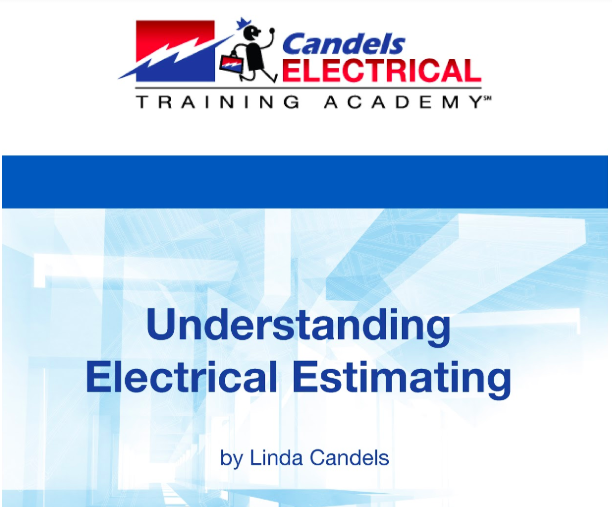Material escalation…think about it. When you hear the words “steel,” “copper,” “aluminum,” “cement,” “petroleum,” “natural gas,” “lumber,” and “gypsum,” what thoughts or words come to your head? Crazy? Volatile? Unpredictable? All of those words are pretty descriptive of the prices of these commodities. For any contractor or supplier involved in construction, many of these commodity items and their volatile pricing escalations will pose some concern in terms of your bid price. Do you plan for a pricing increase and include that contingency in your bid price, possibly causing you not to get a job? Do you include a price escalation clause in your contract to cover unforeseen price variations? Or do you just ignore it entirely?
Not being a lawyer, I am not here to offer legal advice. You should consult your attorney for that. But, armed with some valuable information, you will maximize your time with your attorney to protect your company, and also the outcome of the job in question.
Most jobs that contractors bid are based on a “fixed price.” These prices are based on material prices estimated before the beginning of the project, even though the project may take a year or more to complete. It is entirely logical to think that material prices will rise from bid time to completion time, but major price variations often cannot be anticipated or estimated.
Contributing Factors to Material Escalation
So what has caused this volatility in commodity pricing? Many world events have changed the commodity market. The American political climate has changed the way the world sees trade deficits, and recent events have caused crude oil prices to quickly increase. Former rapid economic development in Asia, especially China, had stressed the market for steel. China consumes about 25% of the world’s steel and they are willing to pay top dollar for it. Much of the steel went to build the infrastructure for the Olympics and the 2010 World Games. Growth in other parts of the world, such as India, Russia, and the Ukraine, have limited exports from these countries so they can meet their own domestic demand.
Storms and natural disasters have also affected the commodity market. Hurricanes and other storms that hit the Gulf Coast region stressed the market for PVC. Material shortages, high energy and transportation costs, and consolidation of production facilities have also attributed to material cost increases.
Resultant Market and Job Site Changes
The magnificent rise in commodity pricing has resulted in market and job site changes, such as job site theft, lack of firm price quotes, higher project costs, delayed or cancelled projects, increased litigation, liquidated damages, and extended overhead.
Avoiding the Pitfalls
There are a number of things a contractor should do in order to manage price escalations. By being proactive in the pre-construction phase, you can add a material cost escalation clause into your contracts. This proactive approach would be based on specific cost indexes, for specific products reaching a specific price point escalation. By doing so, this would avoid large contingencies that the contractor would need to build into their bid price.
As a side note, as gas prices increase, you may want to check your overhead. Rapidly increasing prices may effect your bottom line!
On the flip side, if your company chooses not to address the issue of material price escalation, a number of scenarios could occur. A retroactive quantification of material price escalation will involve “forensic” material escalation analysis, using cost indexes, material lists, and trigger points not quantified in advance.
A contractor should always monitor his costs versus the estimate. Strong pre-construction service is essential for setting costs, scheduling, determining alternative methods and solutions, providing early identification of issues and risk management.
Contracts with Material Escalation Clauses
Essentially what a material escalation clause accomplishes is shifting risk from a supplier of goods and services back to the owner. Fair and efficient sharing of risks can save many projects from legal battles and claims. It has been stated that “If you communicate the unexpected in advance, the unexpected becomes the expected, and the expected is easier to handle than surprises.” I like that.
Material escalation clauses can be “cost based” or “index based.” A cost-based clause compares actual incurred costs with bid costs. AGC Document No. 200.1, Amendment No. 1, requires the parties to establish a series of baseline prices for material identified by them as potentially “time and price” impacted and to provide a method for adjusting the contract price as a result of fluctuations in those baseline prices.
An index-based clause tracks and adjust prices based on numerous existing material price indexes such as the Producer Price Index “PPI” published by the Bureau of Labor Statistics and one published by the Engineering News Record.
Contracts without Material Escalation Clauses
Contracts written without material escalation clauses that experience exceptional price increases in commodity costs will undoubtedly be subject to claims. The outcome of these claims will be based on factual circumstances and whether the contract language and applicable legal doctrines provide a basis for relief.
It does make practical sense to provide some relief to a supplier or contractor rather than face a default precipitating the need to re-procure. Relief will avoid claims, saving everyone time and money, avoid a breach, or avoid a contract to terminate or go under. No doubt a replacement contractor would pass the price escalations onto the owner anyway, will probably not guarantee the previous contractor’s work, may possibly cause time delays on the project due to remobilization, and there may possibly be a drop in quality. Owners who allow a price escalation clause may really benefit in the end when you consider the previous statement. And, it really is unlikely that the owner will be able to avoid price escalations altogether.
Legal Terms and Doctrines
If you need to confront the owner with a material escalation issue, you may or may not have a legal battle ahead. Many lawyers will rely on the Latin phrase of Roman origin “pacta sunt servanda”, which roughly translated means “the contract is law.” Therefore, the contract binds parties to absolute liability for the unconditional contractual promise.
Some of you might also have heard the term “force majeure”, which relates to when an event occurs that is beyond a party’s control that would invariably lead to the non-performance of a contract. If you use the force majeure clause in order to help with escalating material costs however, it probably will not help you. It usually only allows a contractor additional time to perform, rather than additional money to perform.
There are also some legal doctrines which a contractor may be able to use as justification for material cost escalation.
“Commercial impracticability” deals with an unforeseeable change in a basic assumption upon which the contract was based. However, since commodity construction prices have been fluctuating widely since about the year 2000, this would be a difficult doctrine upon which to base your argument knowing the history of price escalation.
“Impossibility” occurs when defects in the plans and specifications arise for which the contractor is not responsible. However, courts will not apply the doctrine of impossibility just because performance of the contract has become more expensive than previously anticipated.
“Mutual mistake” deals with situations where the mistake was a fact that caused a severe imbalance in the risk of a project. Explanation….
“Frustration of purpose” must be a substantial claim, requiring demonstrating certain facts to satisfy legal criteria. This is very difficult and rarely successful. A party’s purpose of the contract must be completely, or almost completely, frustrated by a supervening event. Without it, the transaction would make little sense.
Regardless of a contractor’s situation, the “burden of proof” lies with the contractor. Either they have to make the owner/developer understand it and compensate them for it through a change order or they will have to fight for it in court. Either way, it’s on them.
Sample Material Escalation Clause: If, during the performance of this contract, the price of significantly increases, through no fault of contractor, the price of shall be equitably adjusted by an amount reasonably necessary to cover any such significant price increases. As used herein, a significant price increase shall mean any increase in price exceeding % experienced by contractor from the date of the contract signing. Such price increases shall be documented through quotes, invoices, or receipts. Where the delivery of is delayed, through no fault of contractor, as a result of the shortage or unavailability of _______, contractor shall not be liable for any additional costs or damages associated with such delay(s).
Federal Statutes
Some contracts, especially those for state and federal procurement and public works, contain “escalation” or “price adjustment” clauses. Federal Acquisition Regulation FAR § 16.203-2 allows for “fixed price contracts with economic prices adjustments to be used when there is serious doubt concerning the stability of market or labor conditions that will exist during an extended period of contract performance.” FAR § 16.203-2 recognizes three types of escalation clauses, including adjustment clauses tied to established prices, adjustment clauses tied to actual costs versus bid prices of labor or materials, and adjustment clauses tied to indexes of labor or material.
The concept behind these escalation clauses is that the government agency ultimately will save money when contractors cannot predict commodity prices with assurance because the agency will avoid the large contingencies contractors would need to build into their price quotations.
If a contract in which the provision of goods predominates, the Uniform Commercial Code UCC § 2-615 excuses performance if the rise in cost is due to some unforeseen contingency, such as war, embargo, local crop failure, unforeseen shutdown of major sources of supply or the like, which either causes a increase in cost or altogether prevents the seller from securing supplies necessary to his performance. If a contract involves providing services as well as goods to a jobsite, the UCC will not apply.
Finally the American Institute of Architects AIA Article 4.36 allows a contractor to make a claim for additional compensation if he incurs additional costs for several stated reasons and “other reasonable grounds.” In addition, AIA Article 8.3.1 states that “contract time shall be extended if contractor is delayed for labor disputes, fire, unusual delays in deliveries, unavoidable casualties or other causes beyond his control.”
Managing Escalation During the Project
The best way to avoid trouble is to avoid trouble, remembering all the while that the most influential part of any construction project is money. Money can keep a project going or it can stop it. Monitoring your progress on a job will bring potential issues up early, hopefully avoiding job loss or stoppage.
A contractor should always monitor his costs versus the estimate. Strong pre-construction service is essential for setting costs, scheduling, determining alternative methods and solutions, providing early identification of issues and risk management. In other words, while you might not be able to control costs (of commodity items), you can manage them. Historical escalation rates will also help a contractor predict long-term material escalation.
Other Options
What if the owner will not agree to a material escalation clause? A contractor does have other options. Purchasing materials in advance or increasing your buying power by buying the material for several projects at once, may be helpful. Perhaps the owner will pay you for materials for his job that will be procured and stored in a bonded warehouse, eliminating possible price escalations. You can also include a contingency budget, or an adder to your bid, for price escalations.
Conclusion
There are a number of issues to consider when bidding a job in this tricky economy with crazy commodity cost fluctuations. First, you should address the issue of material price escalation during the negotiation phase of a project. Review and revise your contracts now because procrastination in this case will not pay! Also, do not wait until escalations begins affecting your project, your profitability or your company’s sustainability to try to convince the owner that it should absorb the price increases. Communication is the key to the success of any project, especially one where there might be pitfalls. Involve the owner early and act as partners to complete the job on budget and on time.



 A new electrical estimating book hits the press! Candels Estimating introduces its first e-book:
A new electrical estimating book hits the press! Candels Estimating introduces its first e-book: 










